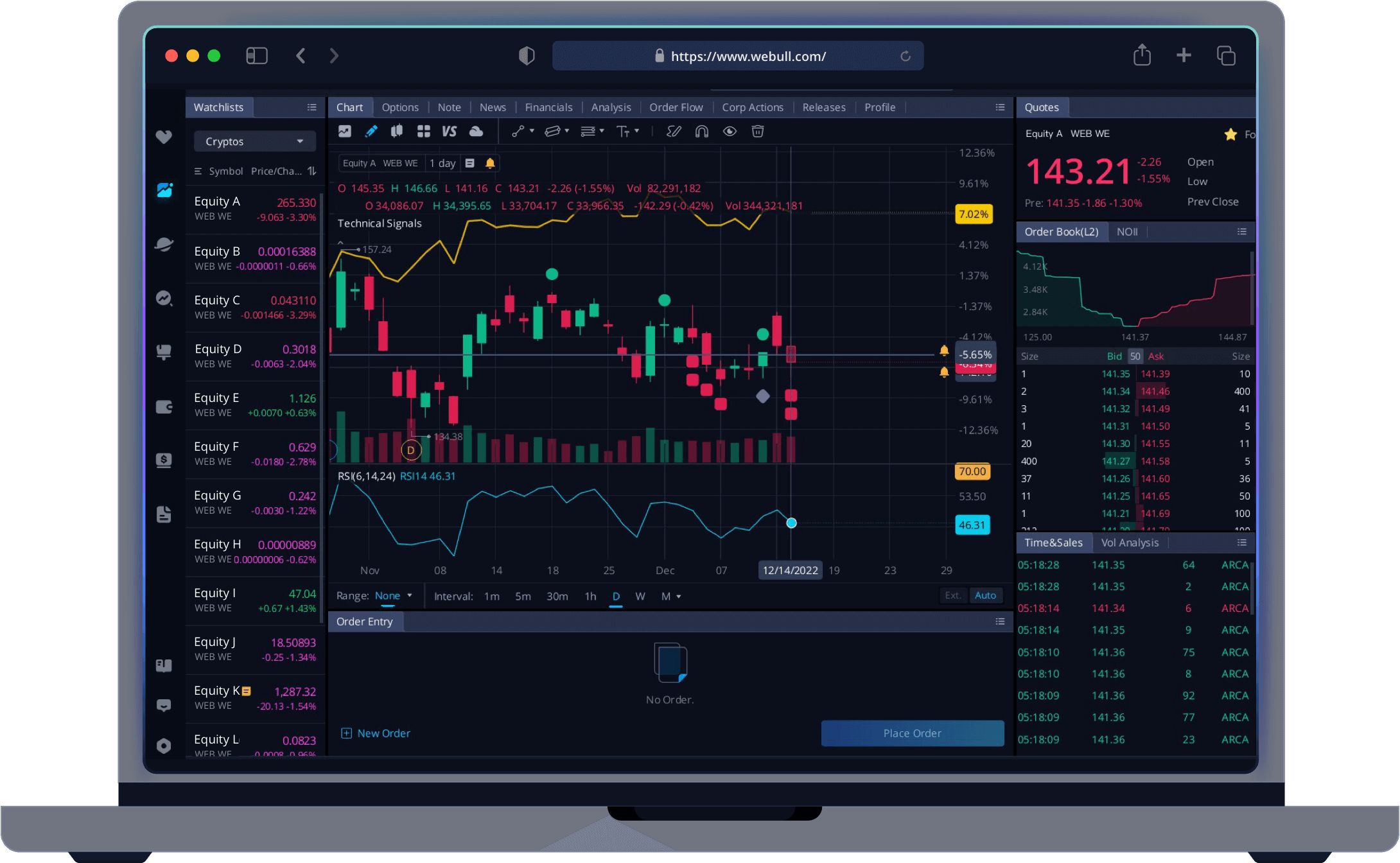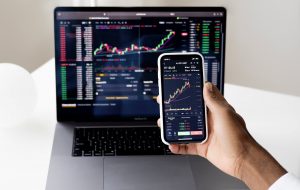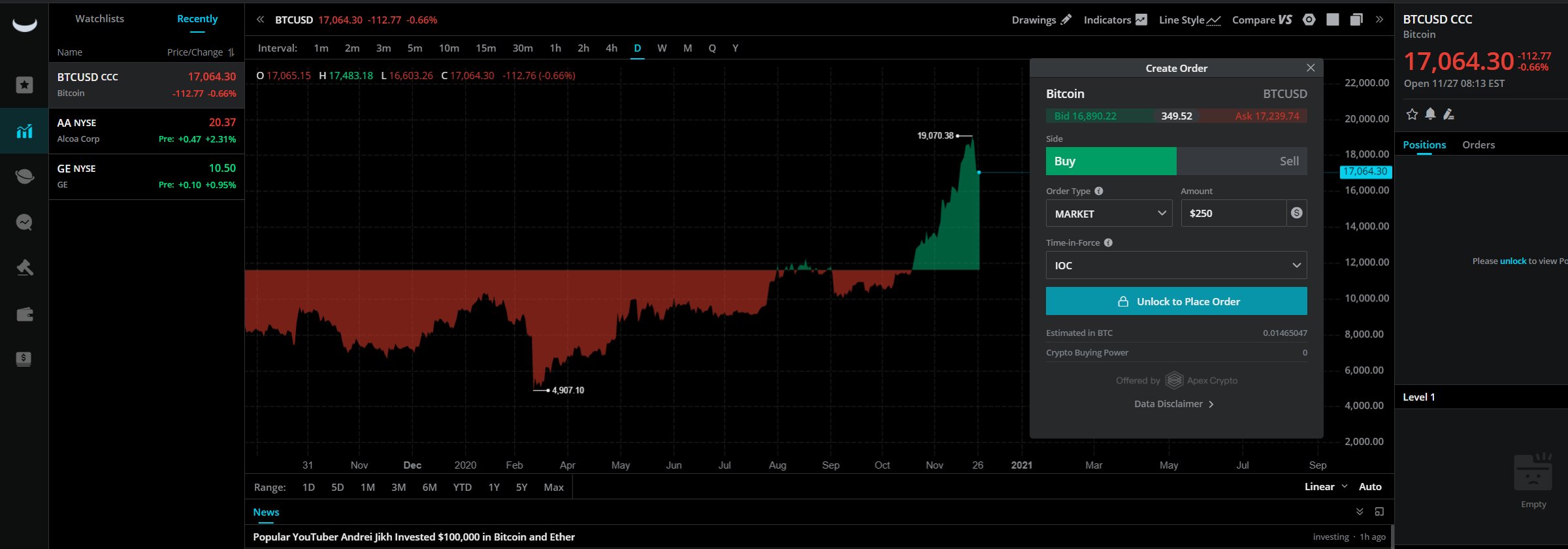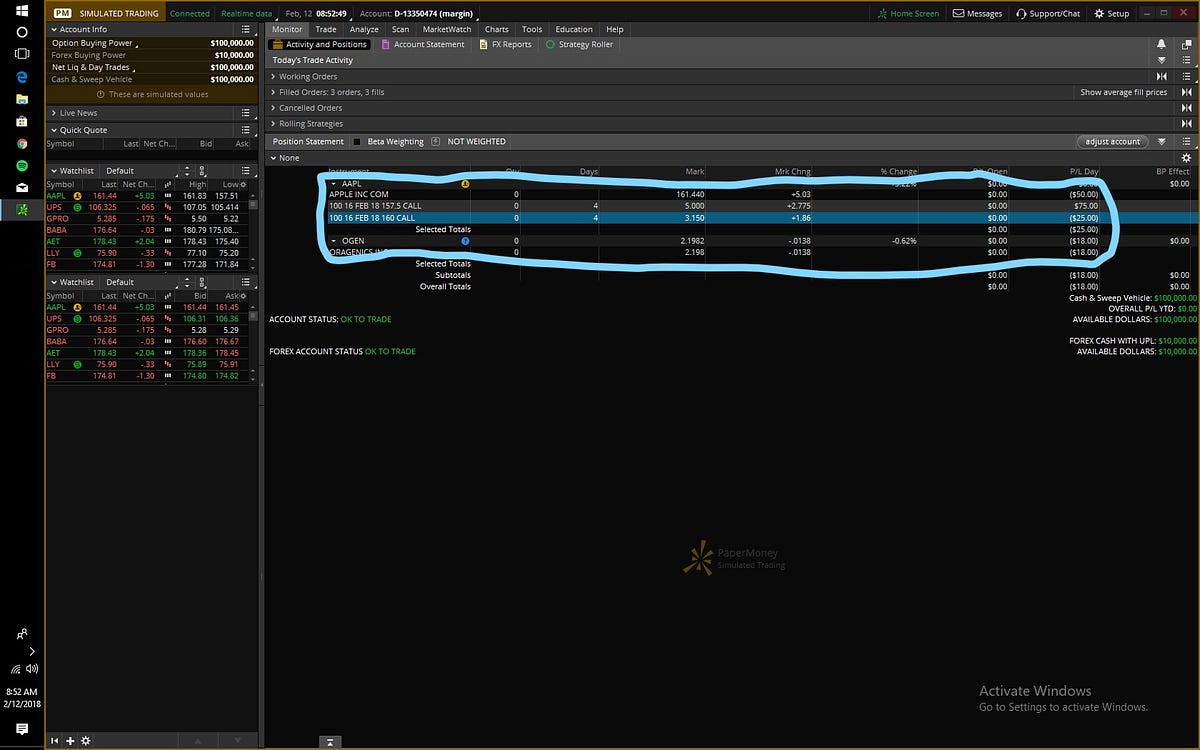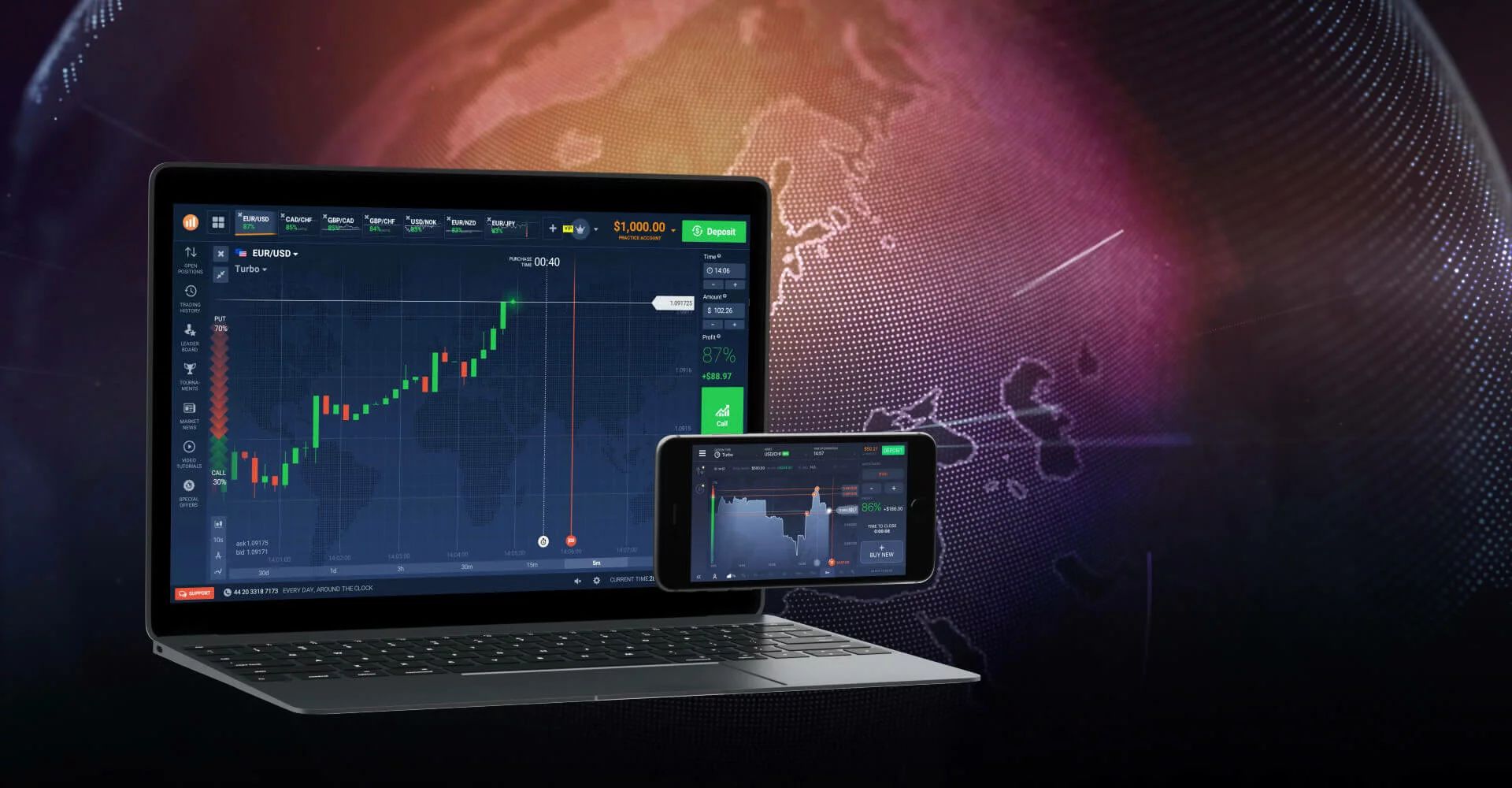Finding the Webull Paper Trading Feature
Webull is a popular online brokerage platform known for its comprehensive set of tools and features to help traders make informed investment decisions. One of the key features offered by Webull is paper trading, which allows users to practice trading strategies and explore the platform’s functionalities without risking real money.
To find the Webull paper trading feature, you first need to have a Webull account. If you don’t have one, you can sign up for free on the Webull website or download the Webull app from your app store. Once you have logged into your account, you will be directed to the Webull main dashboard.
On the main dashboard, navigate to the bottom toolbar and look for the “More” tab. Tap on it, and a new screen will appear with a list of additional features and settings. Scroll down this page until you find the “Paper Trading” option. It is usually located towards the bottom of the list. Tap on “Paper Trading,” and you will be redirected to the paper trading interface.
Alternatively, if you are using the Webull website, you can find the paper trading feature by clicking on the arrow icon at the top-right corner of the Webull homepage. A dropdown menu will appear, and you should see the “Paper Trading” option listed there. Click on it, and you will be taken to the paper trading interface.
Once you have accessed the paper trading interface, you will have access to a simulated trading environment where you can practice trading stocks, options, and cryptocurrencies. This feature is an excellent tool for beginners who want to gain experience and confidence before diving into live trading.
Furthermore, paper trading on Webull provides a realistic trading experience, as it uses real-time market data to execute trades and track performance. You can explore different trading strategies, test the impact of market conditions, and hone your skills without any financial risk.
In the next sections, we will walk you through the process of creating a paper trading account, navigating the paper trading interface, and making trades in Webull’s paper trading feature.
Creating a Paper Trading Account on Webull
Before you can start using the paper trading feature on Webull, you need to create a paper trading account. Here’s a step-by-step guide on how to do it:
- Ensure that you have already signed up for a regular trading account on Webull. If you haven’t, you can easily create one by visiting the Webull website or downloading the app and following the registration process.
- Once you have a regular trading account, open the Webull app or website and log in using your credentials.
- On the Webull main dashboard, navigate to the bottom toolbar and click on the “More” tab.
- Scroll down the page until you find the “Paper Trading” option and click on it. This will redirect you to the paper trading interface.
- Next, you will see a prompt asking you to create a new virtual account. Click on the “Create” button to proceed.
- Fill in the necessary details for your paper trading account, including your username, password, and PIN. Make sure to choose a username and password that are easy to remember but secure.
- After entering the required information, review the terms and conditions of the paper trading feature, and click on the checkbox to confirm that you agree to them.
- Finally, click on the “Create Account” button to complete the process of creating your paper trading account.
Once your paper trading account is created, you can start exploring the features and functionalities of the platform. The virtual account will have a starting balance of simulated cash that you can use to practice trading and experiment with different strategies.
It is important to note that your paper trading account is separate from your live trading account on Webull. Any trades or actions performed in the paper trading account do not have any effect on your real brokerage account.
Creating a paper trading account on Webull is a simple process that allows you to gain valuable experience and build your trading skills without risking actual funds. Take advantage of this feature to familiarize yourself with the platform and test your strategies in a risk-free environment.
Navigating the Paper Trading Interface
Once you have created your paper trading account on Webull, it’s time to explore the paper trading interface. Here’s a guide on how to navigate the interface and make the most of its features:
When you first access the paper trading interface, you will notice that it closely resembles the live trading interface on Webull. This similarity allows you to get comfortable with the platform and become familiar with its various functions and tools.
The main components of the paper trading interface include:
- Dashboard: The dashboard provides an overview of your account information, including your virtual cash balance, portfolio value, and overall performance. It also displays real-time market data and news, helping you stay updated with the latest market trends.
- Charting Tools: Webull’s paper trading interface offers a range of charting tools that allow you to analyze stock price movements and technical indicators. You can customize these charts with various drawing tools, timeframes, and chart types to suit your trading strategy.
- Watchlists: Similar to the live trading interface, you can create watchlists in the paper trading interface to monitor specific stocks or asset classes. This feature helps you keep track of the securities you are interested in and observe their price movements.
- Order Entry: The paper trading interface allows you to place different types of orders, including market orders, limit orders, and stop orders. This functionality enables you to practice executing trades effectively and efficiently.
- Account and Settings: You can access various account settings and preferences in the paper trading interface. This includes managing your profile information, changing your password, and setting up notifications.
As you navigate the paper trading interface, take some time to explore these features and familiarize yourself with their functionalities. Experiment with different charting tools, create watchlists, and practice placing orders to gain a better understanding of how the platform works.
It is also worth mentioning that Webull provides educational resources within the paper trading interface. You can access educational materials, tutorials, and trading guides to enhance your knowledge and improve your trading skills.
By becoming comfortable with the paper trading interface, you will be better equipped to make informed trading decisions and execute strategies when you transition to live trading on Webull.
Understanding the Virtual Cash Balance
In the paper trading feature of Webull, you are provided with a virtual cash balance that you can use to simulate trades and practice your investment strategies. It is important to understand how this virtual cash balance works to make the most out of your paper trading experience.
The virtual cash balance represents the amount of simulated money you have available in your paper trading account. This balance is separate from any real funds you may have in your live trading account on Webull. The purpose of the virtual cash balance is to allow you to trade and experiment with different strategies without risking your actual capital.
When you first create a paper trading account, it will be assigned a starting balance of virtual cash. The specific amount may vary depending on the trading platform, but it is typically a substantial sum to enable you to make meaningful trades and experience realistic market conditions.
As you execute trades in the paper trading account, the virtual cash balance will change based on the profits or losses from those trades. If you make successful trades and generate profits, your virtual cash balance will increase accordingly. Conversely, if your trades result in losses, your virtual cash balance will decrease.
It is important to note that the virtual cash balance is not withdrawable or convertible to real money. It is solely meant for simulation purposes within the paper trading environment. The purpose of the virtual cash balance is to help you practice trading without risking your actual capital and to gauge the effectiveness of different trading strategies.
By closely monitoring your virtual cash balance as you execute trades, you can track your performance and assess the success of your strategies. This allows you to make adjustments and refine your approach to improve your trading skills.
Understanding the virtual cash balance in Webull’s paper trading feature is crucial for effective practice and learning. By utilizing this feature wisely and exploring various trading scenarios, you can gain confidence in your trading abilities and develop a successful trading strategy before venturing into live trading with real funds.
Making Trades in Webull Paper Trading
Webull’s paper trading feature allows you to practice making trades and executing various strategies without risking real money. Here’s a step-by-step guide on how to make trades in Webull’s paper trading:
- Once you have logged into your paper trading account on the Webull platform, you will be directed to the paper trading interface. From here, you can access the various tools and features needed to make trades.
- Start by selecting the symbol or stock you want to trade. You can do this by searching for the company name or using the stock’s ticker symbol in the search bar located at the top of the interface.
- After selecting the desired stock, you will be presented with relevant information such as the current price, key statistics, and chart of the stock.
- Next, decide on the type of order you want to place. Webull offers different order types, including market orders, limit orders, and stop orders. Understand how each order type works before deciding which one is most suitable for your trading strategy.
- Enter the quantity of shares you want to trade. Ensure that you carefully review the order details to confirm the number of shares you are planning to buy or sell.
- If you are placing a limit order or stop order, you will need to specify the price at which you want the order to be executed. Take into consideration the current market conditions and set a price that aligns with your trading strategy.
- Review all the details of your trade, including the order type, quantity, and price. Double-check that everything is accurate before submitting the order.
- Once you are satisfied with the trade details, click on the “Submit” or “Place Order” button to execute the trade.
- After the trade has been executed, you can track its progress in your account’s order history. You will be able to see the details of the trade, including the executed price and any associated fees.
- Monitor the performance of the trade and evaluate its impact on your virtual cash balance. Take note of any insights or lessons learned from the trade to inform your future strategies.
Webull’s paper trading feature provides an opportunity to practice executing trades and test different strategies in a risk-free environment. By regularly placing trades and analyzing their outcomes, you can enhance your trading skills and gain confidence in your decision-making abilities.
Remember that paper trading is meant for educational purposes and does not involve real money. It allows you to experiment and learn without the fear of financial loss. Use this feature to its fullest advantage to refine your trading skills and develop effective strategies for live trading in the future.
Tracking Your Paper Trading Performance
Tracking your paper trading performance is essential for improving your trading skills and evaluating the effectiveness of your strategies. Here are some tips for effectively tracking your performance in Webull’s paper trading feature:
1. Keep a Trading Journal: Maintain a journal where you record your trades, including the stock symbol, entry and exit prices, trade size, and reasoning behind the trade. This will help you analyze your decision-making process and identify patterns in your trading behavior.
2. Analyze Trade Results: Regularly review the outcome of your trades. Assess whether they resulted in profits or losses and identify the factors that contributed to the outcome. Analyzing your trade results will provide insights into the effectiveness of your strategies and help you refine your approach.
3. Track Key Metrics: Monitor important metrics such as your win rate, average return per trade, and risk-to-reward ratio. These metrics will give you a clearer understanding of your overall performance and allow you to make data-driven decisions when modifying your trading strategies.
4. Use Performance Charts: Webull’s paper trading feature offers performance charts that visualize your account’s growth over time. Utilize these charts to track the progress of your virtual cash balance and evaluate the effectiveness of your trading strategies.
5. Identify Strengths and Weaknesses: Pay attention to the types of trades in which you excel and those in which you struggle. Identify your strengths and build on them, while also working on improving your weaknesses. This self-reflection will help you develop a more well-rounded approach to trading.
6. Evaluate Risk Management: Assess your risk management techniques and determine if you are adequately managing your positions and utilizing appropriate stop-loss orders. Evaluating your risk management strategies will help safeguard your capital and minimize potential losses.
7. Seek Feedback and Education: Join online trading communities or seek guidance from experienced traders. Engaging with others in the trading community can provide valuable perspectives on your trades and help you further develop your trading skills.
Tracking your paper trading performance allows you to identify areas of improvement and refine your trading strategies. By effectively evaluating your trades and implementing learnings from your analysis, you can steadily improve your skills and approach to trading.
Always remember that paper trading is a learning process, and it’s normal to make mistakes along the way. Embrace the opportunity to learn from your experiences and continue to explore new approaches in your paper trading journey.
Utilizing Advanced Tools and Features in Paper Trading
Webull’s paper trading feature offers a variety of advanced tools and features that can enhance your trading experience and help you refine your strategies. Here are some key tools and features to explore:
1. Advanced Charting: Webull provides robust charting capabilities, allowing you to analyze stock price movements and apply technical analysis. Take advantage of the various charting tools, indicators, and drawing features to gain insights into market trends and make more informed trading decisions.
2. Simulated Orders: Webull’s paper trading feature allows you to place simulated orders with different durations, such as day orders, good-till-canceled (GTC) orders, and extended hours orders. Practice executing these orders and understand how they interact with the market during different trading sessions.
3. Level 2 Quotes: Level 2 quotes provide a deeper view of market liquidity and order book depth. Utilize this feature in your paper trading account to gain a better understanding of supply and demand dynamics and identify potential trading opportunities.
4. Virtual Trading Competitions: Webull occasionally hosts virtual trading competitions for paper traders. Participating in these competitions can be a fun and engaging way to test your skills against other traders, learn new strategies, and potentially win prizes.
5. Playback Mode: The playback mode allows you to replay historical market data and simulate trades as if they were executed in real-time. This feature is particularly useful for backtesting your trading strategies and observing their performance under different market conditions.
6. News and Research: Webull provides access to real-time news and research reports within the paper trading interface. Stay informed about the latest market developments and utilize research tools to gather insights that can inform your trading decisions.
7. Paper Trading API: For more advanced users, Webull offers a paper trading API (Application Programming Interface) that allows for programmatic access to the paper trading platform. This feature is beneficial for algorithmic traders or developers who want to automate their paper trading strategies.
By exploring and utilizing these advanced tools and features, you can take your paper trading experience to the next level. Experiment with various strategies, test different order types, and leverage the available resources to sharpen your skills and improve your trading performance.
Remember, the goal of paper trading is to gain experience and build confidence in your trading abilities. Use these tools and features to their fullest advantage, and don’t be afraid to explore and experiment with new techniques and strategies along the way.
Transitioning from Paper Trading to Live Trading on Webull
Once you have practiced and gained confidence in your trading skills through paper trading on Webull, you may feel ready to transition to live trading with real money. Here are some essential steps to ensure a smooth transition:
1. Evaluate Your Performance: Take the time to assess your paper trading performance. Analyze your trades, identify areas of strength, and address any weaknesses or inconsistencies. Ensure that you have developed a well-defined trading strategy that aligns with your financial goals and risk tolerance.
2. Set Aside Capital: Before you start live trading, determine the amount of capital you are comfortable risking. Set aside a specific investment amount separate from your personal finances. This will help you manage your risk and prevent any adverse impact on your financial well-being.
3. Review Necessary Documentation: Ensure that you have completed all required documentation and have a verified Webull account. This typically includes verifying your identity, providing banking information, and agreeing to the terms and conditions set forth by the brokerage.
4. Plan Your Trading Approach: Prepare a trading plan that outlines your goals, risk management strategy, and the types of securities and markets you plan to trade. This plan should also include guidelines for entry and exit points, position sizing, and ongoing monitoring of your trades.
5. Start Small and Gradually Increase Exposure: It is advisable to start with smaller position sizes and gradually increase exposure as you gain more experience and confidence in your trading decisions. This approach allows you to manage risk effectively and limit potential losses.
6. Monitor Market Conditions: Stay informed about market news, events, and economic indicators that may impact your trading positions. Regularly review market trends and adjust your trading strategies accordingly.
7. Manage Your Emotions: Emotions can impact decision-making in trading. Stay disciplined and avoid making impulsive trades or deviating from your trading plan due to fear or greed. Implement risk management techniques such as setting stop-loss orders to minimize potential losses.
8. Continued Learning and Improvement: Live trading is a continuous learning process. Stay updated with market trends, expand your knowledge, and learn from both successful and unsuccessful trades. Regularly evaluate your performance and make necessary adjustments to improve your trading skills.
Remember, live trading involves real money and carries inherent risks. Take the time to fully understand the potential risks and rewards associated with live trading, and only invest amounts you are prepared to lose. Be patient, disciplined, and focused on the long-term goals you have set for yourself.
By following these steps and maintaining a disciplined approach, you can smoothly transition from paper trading to live trading on Webull and embark on your journey as a confident trader.
Tips and Strategies for Webull Paper Trading
Webull’s paper trading feature provides a valuable opportunity to practice trading strategies and gain experience in a risk-free environment. Here are some tips and strategies to help you make the most out of your paper trading experience:
1. Treat it Like Real Trading: Approach paper trading with the same seriousness and discipline as you would with live trading. Emulate real-life trading conditions, set realistic goals, and follow your trading plan meticulously.
2. Start with a Simulated Account Size: Begin paper trading with a virtual cash balance that closely matches the amount of capital you plan to invest in real trading. This will help you get a realistic sense of the potential gains and losses you may experience.
3. Focus on Specific Strategies: Identify and focus on practicing specific trading strategies that align with your trading style and goals. Whether it’s day trading, swing trading, or options trading, hone your skills in one or two approaches before expanding to other strategies.
4. Practice Risk Management: Implement risk management techniques, such as setting stop-loss orders and managing position sizes, to protect your paper trading account. Learn how to effectively manage risk and limit potential losses to develop good risk management habits for live trading.
5. Learn from Both Wins and Losses: Analyze your successful trades to understand what worked well and replicate those strategies. Similarly, review your losing trades to identify areas for improvement and adjust your approach accordingly.
6. Use Stop-Loss and Take-Profit Orders: Utilize stop-loss and take-profit orders to automate your exit strategy. This helps you manage risk and lock in profits, even if you’re not actively monitoring the paper trading interface.
7. Keep a Trading Journal: Record your trades, strategies, and observations in a trading journal. This allows you to track your progress, identify patterns, and learn from your experiences.
8. Stay Informed: Regularly follow market news, economic data, and company announcements to stay updated on market trends. This knowledge will help you make informed decisions and identify potential trading opportunities.
9. Experiment with Different Indicators: Utilize the wide range of technical indicators available in Webull’s paper trading feature to refine your technical analysis skills. Test the effectiveness of different indicators and find the ones that work best for your trading style.
10. Embrace Continuous Learning: Never stop learning and seeking new insights. Explore educational resources within the paper trading interface, join online trading communities, and read trading books to expand your knowledge and refine your strategies.
Remember, paper trading is an invaluable tool for building trading skills and gaining confidence, but it should not be seen as a guarantee of success in real trading. It is crucial to transition gradually from paper trading to live trading while incorporating the lessons learned along the way.
By following these tips and strategies, you can maximize the benefits of Webull’s paper trading feature and develop a solid foundation for future success in live trading.
Frequently Asked Questions about Webull Paper Trading
Here are some commonly asked questions about Webull’s paper trading feature:
1. What is paper trading?
Paper trading refers to the practice of simulated trading without the use of real money. It allows individuals to experience the functionalities of a trading platform, test trading strategies, and practice executing trades in a risk-free environment.
2. Is paper trading on Webull free?
Yes, paper trading on Webull is completely free. You can sign up for a paper trading account and access all the features and tools without incurring any charges.
3. How do I switch from paper trading to live trading on Webull?
To switch from paper trading to live trading on Webull, you need to open a separate live trading account. This involves completing additional documentation and meeting the necessary requirements imposed by the brokerage. You can then transfer funds from your bank account to your live trading account to start trading with real money.
4. Can I access real-time market data in paper trading?
Yes, Webull’s paper trading feature provides access to real-time market data. This enables you to practice trading with up-to-date information and make informed decisions.
5. Are the trading fees the same in paper trading as in live trading?
No, the trading fees in paper trading are not the same as in live trading. Since no real money is involved in paper trading, there are no actual fees or commissions. However, it’s important to keep in mind that trading fees and commissions apply when you transition to live trading.
6. Can I reset my paper trading account if I make a mistake?
Yes, you can reset your paper trading account on Webull. This allows you to start fresh and try new strategies without carrying forward any previous trades or portfolio data. However, it’s important to note that resetting your account will also reset your virtual cash balance.
7. Can I use Webull’s paper trading feature on mobile devices?
Yes, Webull’s paper trading feature is available on both the Webull website and mobile applications. You can access and use the paper trading feature on your mobile device by downloading the Webull app from the app store on iOS or Android.
8. Is there a time limit or expiration for paper trading accounts?
Webull does not impose any time limits or expiration dates for paper trading accounts. You can continue to practice and use the paper trading feature for as long as you wish.
9. Can I transfer my paper trading performance and history to my live trading account?
No, your paper trading performance and history cannot be transferred to your live trading account on Webull. Paper trading and live trading accounts are separate entities with distinct data and balances.
10. Can I have both a paper trading and live trading account simultaneously on Webull?
Yes, you can have both a paper trading account and a live trading account on Webull. They are separate accounts, and you can switch between them whenever you desire.
These are some frequently asked questions about Webull’s paper trading feature. If you have any specific inquiries or concerns, it is always recommended to refer to the official Webull documentation or reach out to their customer support for further assistance.







